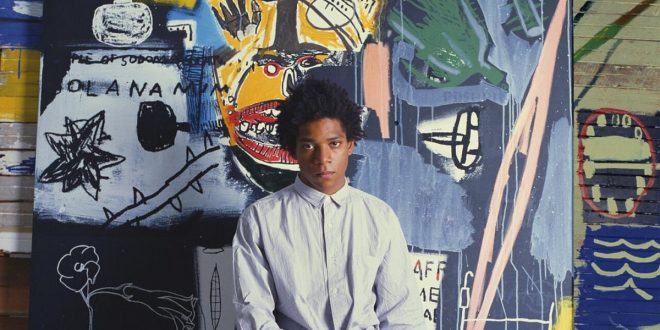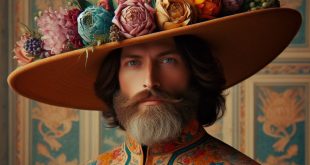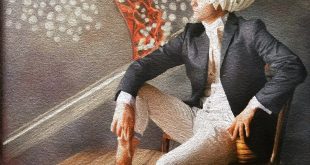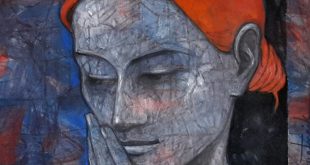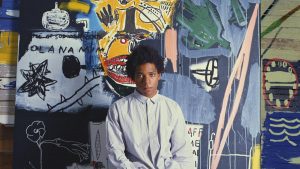 Identity and style, between continuity and break with European tradition
Identity and style, between continuity and break with European tradition
The American way to pictorial creativity is an interesting and vast topic. There are many artists who have helped define the identity and style of American painting. Norman Rockwell, considered the painter of everyday American life, became famous for his realistic and humorous illustrations for the Saturday Evening Post. Jackson Pollock, however, the leader of abstract expressionism, became known for his technique which consisted of dripping paint onto the canvas, dripping. Andy Warhol, the greatest exponent of pop art, used mass and consumer images, even Campbell’s soup cans, to express American culture and society. Jean-Michel Basquiat, the pioneer of street art, mixed graffiti, collage, symbols and words to create works full of meaning and social criticism. These are just a few examples, but there are many other artists who deserve to be appreciated. If you want to know more, you can learn about four more. We hope we have intrigued you.
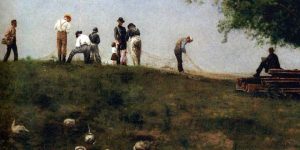 After graduating from Central High School, Thomas Eakins https://www.thomaseakins.org/ studied at the Pennsylvania Academy of the Fine Arts. He took as his subjects Philadelphia life in the 1870s. He was our first painter to accept the reality of contemporary urban America. In 1866 he left for Paris, where he followed his academic education at the École des Beaux-Arts. One of his most important works, The Gross Clinic, exhibited at the Philadelphia Museum of Art and the Pennsylvania Academy of Fine Arts, depicted a surgeon operating in front of his students. Starting from 1880 he used photography as an aid to painting. His works had a sense of form and clarity of stylistic vision. The science of perspective played an important role in his way of painting outdoor scenes. His works revealed an emotional attachment to the community he belonged to. He died on a June day in 1916. His grave awaits you in The Woodlands, near the University of Pennsylvania.
After graduating from Central High School, Thomas Eakins https://www.thomaseakins.org/ studied at the Pennsylvania Academy of the Fine Arts. He took as his subjects Philadelphia life in the 1870s. He was our first painter to accept the reality of contemporary urban America. In 1866 he left for Paris, where he followed his academic education at the École des Beaux-Arts. One of his most important works, The Gross Clinic, exhibited at the Philadelphia Museum of Art and the Pennsylvania Academy of Fine Arts, depicted a surgeon operating in front of his students. Starting from 1880 he used photography as an aid to painting. His works had a sense of form and clarity of stylistic vision. The science of perspective played an important role in his way of painting outdoor scenes. His works revealed an emotional attachment to the community he belonged to. He died on a June day in 1916. His grave awaits you in The Woodlands, near the University of Pennsylvania.
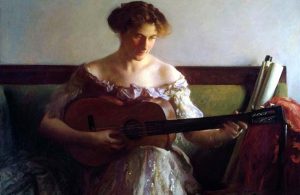 He became known as a member of the Boston School and was a founder of the Ten American Painters. Born on a November day in Cincinnati (Ohio), Joseph Decamp https://www.farnsworthmuseum.org/ attended the Royal Academy of Munich. He taught painting courses at the School of the Museum of Fine Arts in Boston. At the Rockland Farnsworth Art Museum, you can admire one of his oil paintings at the portrait of Albert Hayden Chatfield. His way of working, balanced between realism and impressionism, mainly took the form of paintings of women. Dutch masters, particularly Jan Vermeer, influenced many of his paintings. Portraits are his creative focus. If you would like to get to know him more closely, the Museum of Fine Arts in Boston houses a famous painting by him, The Blue Cup.
He became known as a member of the Boston School and was a founder of the Ten American Painters. Born on a November day in Cincinnati (Ohio), Joseph Decamp https://www.farnsworthmuseum.org/ attended the Royal Academy of Munich. He taught painting courses at the School of the Museum of Fine Arts in Boston. At the Rockland Farnsworth Art Museum, you can admire one of his oil paintings at the portrait of Albert Hayden Chatfield. His way of working, balanced between realism and impressionism, mainly took the form of paintings of women. Dutch masters, particularly Jan Vermeer, influenced many of his paintings. Portraits are his creative focus. If you would like to get to know him more closely, the Museum of Fine Arts in Boston houses a famous painting by him, The Blue Cup.
 His paintings are also housed in the collections of the Smithsonian American Art Museum (Washington, DC). When he held his first solo exhibition, he was among the first American painters to use impressionist methods. Julian Alden Weir https://americanort.si.edu/artist/j-alden-weir-5302, was born on an August day in West Point (New York). Before going to Paris to study at the École des Beaux-Arts, he took art lessons at the National Academy of Design. The son of a drawing teacher, he spent many summers painting in French villages. Through his European travels, he got to know and appreciate the paintings of Frans Hals, Diego Velasquez and Jules Bastien-Lepage. Back in New York, he took a studio near Washington Square. He was a professor of painting and design at Yale University, where he established the first academic art program on an American campus. He died one day in December, in New York. His farm and studio in Branchville are protected as national historic sites.
His paintings are also housed in the collections of the Smithsonian American Art Museum (Washington, DC). When he held his first solo exhibition, he was among the first American painters to use impressionist methods. Julian Alden Weir https://americanort.si.edu/artist/j-alden-weir-5302, was born on an August day in West Point (New York). Before going to Paris to study at the École des Beaux-Arts, he took art lessons at the National Academy of Design. The son of a drawing teacher, he spent many summers painting in French villages. Through his European travels, he got to know and appreciate the paintings of Frans Hals, Diego Velasquez and Jules Bastien-Lepage. Back in New York, he took a studio near Washington Square. He was a professor of painting and design at Yale University, where he established the first academic art program on an American campus. He died one day in December, in New York. His farm and studio in Branchville are protected as national historic sites.
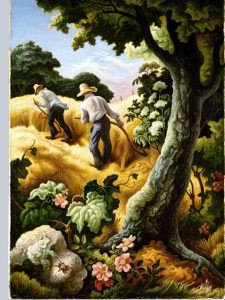 His expressive realism is distinguished by the shapes and bold use of a few key colors. Thomas Hart Benton https://www.thomashartbenton.com/ was born on an April day in Neosho (Missouri), where with his mother’s encouragement he chose to study art. Rebelling against his family’s expectations, he moved to Chicago, where he enrolled at the local Art Institute. In his paintings he devoted himself to the evocations of music as a method of communication. In 1929 he emerged as a spokesman for American regionalist painters. Between contradictory struggles and failures, with his work he was able to represent the image of the America of his time. In Washington you can admire some of his works at the Smithsonian American Art Museum. He lived and worked in New York City, but during the summer months he painted on Martha’s Vineyard, Massachusetts. His Midwestern characters and landscapes are characterized by undulating shapes and brilliant colors. His contribution to twentieth-century American art emphasizes common people and traditions.
His expressive realism is distinguished by the shapes and bold use of a few key colors. Thomas Hart Benton https://www.thomashartbenton.com/ was born on an April day in Neosho (Missouri), where with his mother’s encouragement he chose to study art. Rebelling against his family’s expectations, he moved to Chicago, where he enrolled at the local Art Institute. In his paintings he devoted himself to the evocations of music as a method of communication. In 1929 he emerged as a spokesman for American regionalist painters. Between contradictory struggles and failures, with his work he was able to represent the image of the America of his time. In Washington you can admire some of his works at the Smithsonian American Art Museum. He lived and worked in New York City, but during the summer months he painted on Martha’s Vineyard, Massachusetts. His Midwestern characters and landscapes are characterized by undulating shapes and brilliant colors. His contribution to twentieth-century American art emphasizes common people and traditions.
 To broaden your horizon of knowledge about other painters, you can type http://meetingbenches.com/category/paintings/. The sole purpose of this site is to spread the knowledge of these artists and that other people enjoy their works. The property of the images that appear in this blog correspond to their authors.
To broaden your horizon of knowledge about other painters, you can type http://meetingbenches.com/category/paintings/. The sole purpose of this site is to spread the knowledge of these artists and that other people enjoy their works. The property of the images that appear in this blog correspond to their authors.
 Meeting Benches World art in all forms
Meeting Benches World art in all forms
